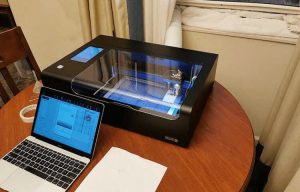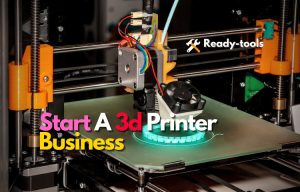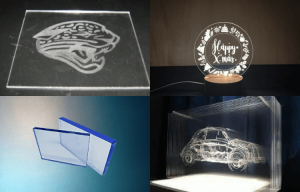Acrylic is among the favorite materials for manufacturers, jewelers, décor experts, and advertisers. It is mainly because of the enhanced durability, weather ability, inertness, and superior properties of acrylic over other plastic materials.
In the past, cutting acrylic was expensive as mechanical cutters left sharp edges that required further investment in polishing the material. However, it all changed with the invention of the acrylic laser cutter. Nowadays, laser cutting acrylic sheets is one of the most convenient and economical methods in the field.
What is a Laser Cutting Acrylic?
Laser cutting is a modern technique of accurately engraving and cutting common materials like metal, plastic, wood, and acrylic using a laser beam. Laser cutting plexiglass or acrylic is based on a similar principle as other laser cutters.
However, acrylic requires a highly powerful laser beam, moving at a steady speed and controlled by computer software. As a result, you get professional detailing on every project, and the laser cutter makes your every creation truly a work of art.
Acrylic is an industrial material widely used in several fields. However, recently it has found its place in the common décor and marketing fields as well. The billboards that you see on the streets are usually made from plexiglass.
Similarly, acrylic is the perfect material for creating several house decoration components and for installing household appliances. So, if you are thinking of setting up a small business, laser cutting acrylic sheets should be your number one thought, for there is a huge amount of potential in this market.
Choosing Acrylic Sheets For Laser Cutting:
Acrylic is counted among the best material for laser cutting and engraving. The acrylic sheet is an inert material with the remarkable toughness and excellent scratch resistance. As a result, laser enthusiasts from all over the world prefer to use acrylic over plastic in their projects. Usually, acrylic is also known as Lucite, Plexiglass, Perspex, and Acrylate.
However, choosing the right acrylic sheet is very critical for the success of your project. It is because different laser cutting designs in acrylic require a suitable sheet. You can choose your material from these options:
Cast Acrylic Sheets:
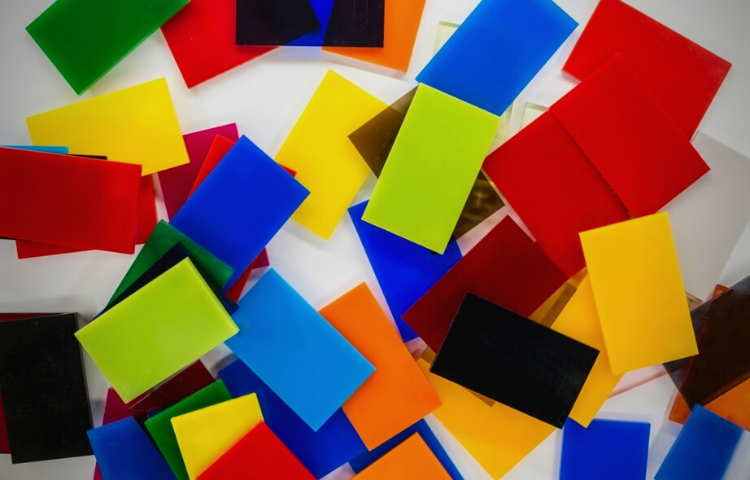
Cast Acrylic is the most commonly used material for laser cutting. It is the practical answer to all those who ask, “Can you laser cut plexiglass?” The sheet is available in several different dimensions that you can further enhance according to the scope of the project. Moreover, the clear sheet accepts all forms of engraving, marking, and cutting, just like a clean slate.
Features:
- Several color options.
- Low price.
- Easily accessible.
- Available in several dimensions
- It can be cut with a CO2 laser machine.
Extruded Acrylic Sheets:
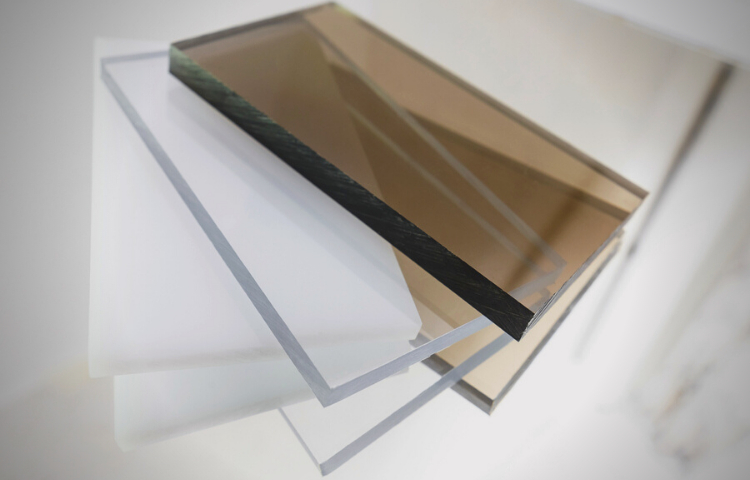
Extruded acrylic sheets are an optically transparent form of acrylic. It is produced when a liquid polymer is extruded through a series of rollers till the desired thickness is achieved. Its chemical and material properties are very similar to the clear acrylic, except that the extruded acrylic offers better water resistance and strength than other types of acrylic.
The final texture of extruded acrylic depends on the method of cutting used in the project. For instance, laser cutting extruded acrylic produces a clear, polished surface, while mechanical engraving results in a frosted look.
Features:
- Transparent surface.
- Highly durable.
- Waterproof.
- Suitable for all laser projects.
- It can be cut with a low-powered laser.
Which Acrylic is not Suitable for Laser Cutting?
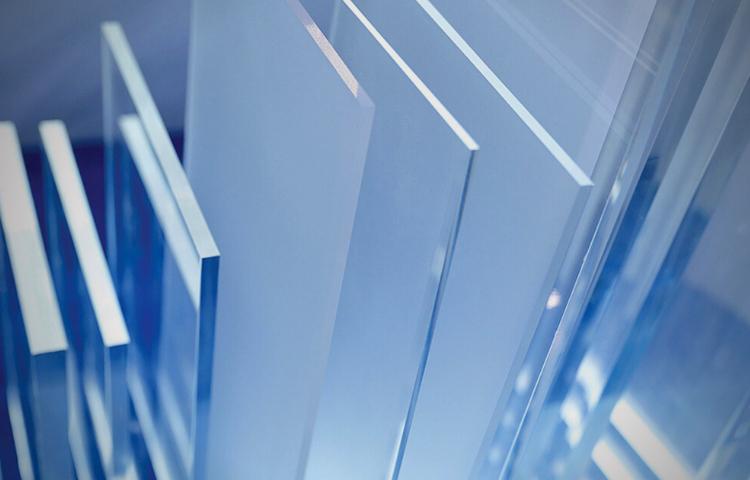
Abrasion Resisting Acrylic sheet is the only type of acrylic that is not suitable for laser engraving. It is because the material offers more than 50% abrasion resistance that doesn’t allow any laser to penetrate without causing any damage. However, it is widely used in several other fields for its sturdy nature.
For instance, plumbers use these sheets for waterproofing and securing indoor water pipelines. Similarly, manufacturers use the abrasion resisting acrylic to require inert, durable, and impact resistance.
Methods of Laser Cutting Acrylic:
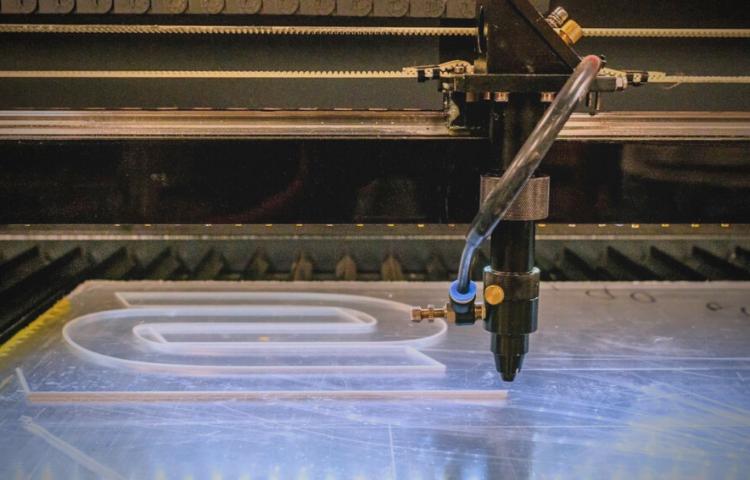
Whether you are DIY laser-cutting acrylic or setting up a small business, you can choose from a number of different methods. Each method has different requirements and yields different results.
The selection of an appropriate method depends on a number of factors, including the type of machine, laser power, type of material, and the project’s scope. You can use the following methods for acrylic sheet laser cutting:
Reactive Cutting Acrylic Sheet:
Reactive cutting is used to cut thick acrylic sheets with minimal effort. However, you need a powerful oxygen torch ignited by a laser beam for the process.
This method blasts a powerful beam of a reactive torch to melt the acrylic sheet without damaging the surrounding parts. The beam is concentrated on the acrylic surface using a lens, and the ventilation fan quickly solidifies the molten edges to prevent irregular edges.
Acrylic Laser Cut Designs:
The design cut method requires a special laser cutting machine for acrylic sheets. You can choose any automatic CO2 or fiber laser for the job. However, the machine must have at least 40W laser power and must be supported by at least one laser software.
The design cut requires immense precision and consistent laser speed for the job. All you need is to design the image on your favorite software, import the design to the laser Grbl, choose the correct settings, and let the laser do its job. Both manufacturers and DIYers prefer this method for its ease of operation.
Melt and Blow Acrylic Sheet:
The melt and blow method requires a powerful laser beam capable of instantly melting the acrylic sheet. You can achieve the required 320 °F (160 °C) acrylic melting point even with a common CO2 laser. However, the selection of optimum settings for the sheet is the critical part. You can consult the manufacturer to assist you with the settings.
The acrylic sheet is melted using a powerful laser beam, which is similar to all cutting processes. The only difference is that a jet of gas is blown over the molt to prevent unnecessary accumulation on the design. As a result, a clear, elegant, and detailed design is obtained by this method.
Thermal Stress Cracking Acrylic Sheet:
Acrylic is a relatively brittle material than other forms of polymer. The acrylic sheet is prone to thermal fracture and cracking when hit with a laser beam. As a result, you can direct the cracks using the laser’s movement to obtain the desired results.
In this method, the acrylic sheet is heated just below the melting point to heat the sheet significantly. The laser is then quickly moved to cause thermal fracture on the sheet. The laser speed in mm/s and the path of the laser determine the direction of the cracking. This method doesn’t require as powerful a laser device as others, so small businesses and DIYers favor it.
However, the whole process is manual, and you can’t use it with an automatic laser engraver. Therefore, it is recommended only to use this process if you are well-experienced with manual laser movements.
Vaporization Cutting Acrylic Sheet:
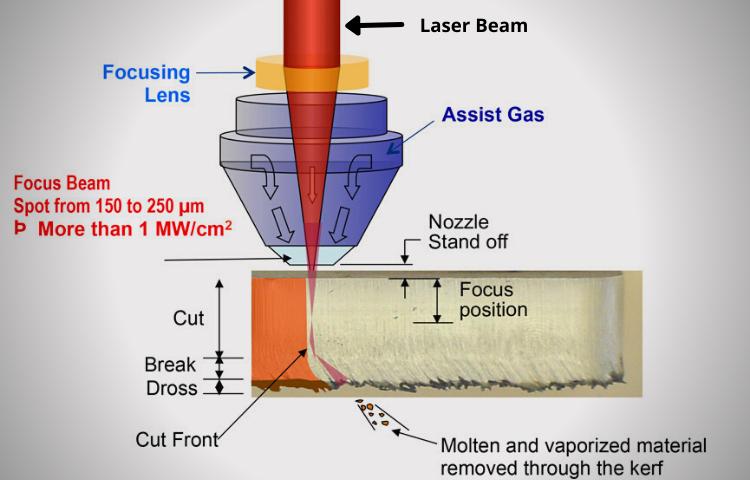
Typical laser cutting and engraving involves quick material vaporization for the desired results. So, the vaporization cutting method yields the best results if you choose wisely. This method is suitable for both laser cutting and laser engraving acrylic.
In this method, a high-powered laser is concentrated on the acrylic sheet. As a result, the topmost layer of the sheet melts, revealing the secondary layers. The secondary layers have a relatively lower melting point, so the groove or keyhole quickly deepens.
You may choose to stop the cutting process midway from forming an engraving or melting the sheet for vapor cutting. In any case, the resultant cut is clear, doesn’t cause frosting on the sheet, and the polishing is also minimal.
How to Laser Cut Acrylic at Home? Step-by-Step
Laser cutting acrylic is not complex as laser cutting metal and other hard materials. Acrylic is a brittle material with a relatively low melting point. So, you don’t need to buy expensive equipment to get started with the job. Moreover, you can even set up a small business at home if you get good enough with designing and handling the laser.
To get started with acrylic laser cutting, all you need is a computer, the best laser cutter for acrylic that you can afford, and a lot of creativity. Here’s how you can cut your first acrylic cutting project:
Understand Laser Cutting:
The first thing that you need before starting the project is to understand the working of a laser cutter. This will help you know your limits and open the door to numerous possibilities.
As mentioned before, a laser cutter is a machine that uses a high-powered laser beam to melt or vaporize the acrylic sheet. You can use the laser to cut a straight line, engrave the sheet or even cut complex designs from a simple sheet.
However, you are limited to only engraving or cutting the material, as the acrylic sheet is not as suitable for laser marking. However, once you get good enough with the job, you can even start marking acrylic sheets at a later stage in your life.
Choosing the Right Type of Acrylic:
When using a laser cutter, you are only limited to two types of acrylic sheets, i.e., cast and extruded. However, each of these types has several sub-types that further extend your right to choose. The cast acrylic sheet is a common type of acrylic that comes in several colors.
However, you need a relatively powerful laser cutter to work with such material. On the contrary, the extruded acrylic sheet is a glass-like sheet that doesn’t require as much laser power.
However, if you use an underpowered laser, you may end up frosting the edges of the sheet and thus ruining the design. In any case, both types of acrylic have their pros and cons, so choose wisely.
Choosing the Right Laser Cutter:
The market is full of laser cutting machines suitable for a number of materials. However, choosing the best acrylic sheet laser cutting machine is very crucial as it determines what you can do and what you can’t.
Moreover, some laser machines even allow you to cut other soft materials like plastic and wood, along with acrylic. So, you can use such a machine to increase your business and earn a little extra. In any case, the type of laser machine depends on which material you are working with and the type of design.
Setting up the Workshop:
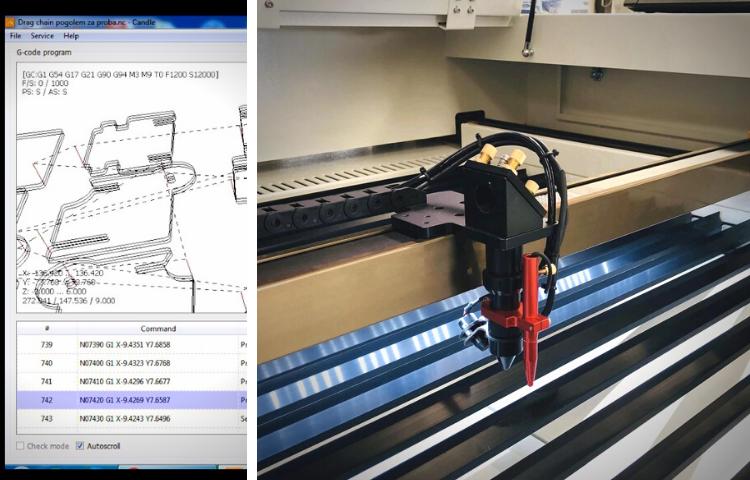
Laser cutting is not as complex as some people suggest. All you need is a computer, a workbench in the workshop, a laser cutter machine, and a lot of creativity. You can use any spare room in the house to set up your workshop and get started with the projects.
Moreover, it is recommended to have at least three spare acrylic sheets in case you mess up the design. If your current station fulfills all these requirements, you are good to go.
Laser Cutting Acrylic:
- Prepare the sheet: The acrylic sheet is available in several dimensions varying in length, width, and thickness. Your sheet needs to be compatible with the work area of your laser cutter to get started in the first place. So, it is wise to cut the sheet in a compatible size and shape according to the work area of your laser cutter.
- Design: The second step is to decide what you want the final product to look like. For instance, you can choose from simple shapes in the first few attempts and then gradually move towards more complex designs. You can use your preferred software like Adobe Photoshop, Illustrator, CorelDraw, MS Paint, and AutoCAD. Moreover, you can even download the designs from online websites for simple non-commercial projects.
- Prepare the laser: Usually, the laser cutter is controlled with laser software. The manufacturer provides the software, and some even allow you to use third-party software. Open the laser software and import the image that you want to laser cut on acrylic. Next, choose the best laser wattage to cut acrylic according to the type of acrylic sheet and your selected method.
- Start cutting: After you have prepared the laser, the final step to laser-cutting acrylic is to hit the print button. The automatic laser machines work very similarly to the 3D printers. The laser software determines the laser speed and path according to the design. Moreover, you may even choose to stop the process midway if you change your mind. In any case, laser cutting requires minimum user interaction as it is an automatic process.
- Finishing: Sometimes, an additional step is also involved in the laser cutting process, i.e., finishing. The finishing depends on whether you want the final design to have polishing, detailing, and professional touch. In any case, it is recommended to carefully examine the cut and compare it with the design that you imagined. You can use several methods to polish the acrylic design and obtain satisfactory results.
Frequently Asked Questions:
How to engrave acrylic with a laser cutter?
You can use the vaporization cutting method to engrave acrylic with a laser cutter. The process involves melting the topmost layer of the sheet to form a groove. You may choose to stop the laser midway at the desired depth to form an engraving or even cut the sheet all the way through.
Where to buy a laser cutter for Acrylic?
Acrylic sheets for laser cutters are available from both your local hardware stores and some online stores like Amazon. In any case, it is recommended to buy a sheet that is supported by your laser cutter for best results.
How thick can a laser cutter cut acrylic?
An average laser cutter can cut up to 3 to 6 mm with the CO2 laser module and a 2” lens. However if the laser sheet exceeds 20mm thickness, a 120W laser cutter with a 5” lens is recommended. You can even consult the sheet’s manufacturer to check if it is compatible with your laser cutting machine.
Conclusion:
Acrylic is among the top materials suitable for laser cutting. The inert nature, high durability, and easy access to acrylic make it the number one choice of several manufacturers and small businesses.
However, you need to understand the workings of a laser cutter to get started with the project. This article includes all the information that you need about acrylic laser cutters.

